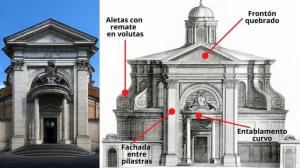Nazca lines: characteristics, theories and meanings
A set of biomorphic, phytomorphic and geometric geoglyphs designed and executed on the Nazca and Palpa desert, department of Ica, Peru, is known by the name of "Nazca lines".
It is often believed that these lines can only be seen from the sky. For this reason, they have generated all kinds of questions and speculations. Were the Nazca lines dedicated to the gods? Was there in those times possible technology for the magnitude of this work? Were they landing strips for aviation prototypes of the Nazca culture or, beyond, for extraterrestrial beings? Were they made by human hands?
The truth is that the beauty of the Nazca lines can be seen from the top of the surrounding hills, which radically changes the way of understanding them. In fact, this is how the Peruvian archaeologist Toribio Mejía Xesspe discovered them in the 20th century, specifically in 1927.

Interest in the study of these geoglyphs did not become general until 1940, when Paúl Kosok and María Richie, two international researchers published a series of aerial photographs taken by the Aerographic Service National.
These geoglyphs, that is, these inscriptions on large areas of land, are of enormous dimensions and can be easily observed from above, which has given rise to countless theories about the purpose of their creation.
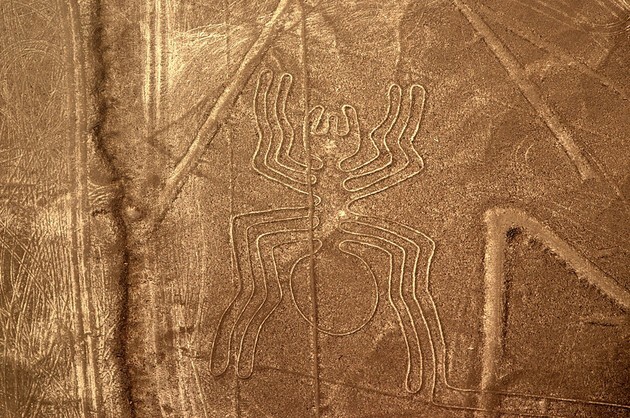
In any case, the Nazca geoglyphs in Peru are not the only ones in the world, but they are the most famous. In fact, its characteristics have earned it to be named a World Heritage Site by Unesco since 1994.
However, the geoglyphs of Acre and Rondomia in Brazil, the Chilean geoglyphs of Atacama, Pintado and Chiza also stand out; In addition, geoglyphs are also known in Australia, the United States and England.
Characteristics of the Nazca lines

Research suggests that the Nazca lines were produced over about 1500 years, a process that came to an end around the 16th century.
According to some sources, the Nazca lines stand out because they cover about 400 square kilometers. Other sources indicate that they can cover up to 800 km2. In any case, they are the largest in the world.
The width of each line can vary between 40 and 210 centimeters wide. Just as the width of the lines varies, obviously the length of each line depends on the layout. There may be lines of up to 295 meters. The depth of the furrows also varies from simple shallow crevices to trenches of no more than 30 meters.
Throughout this territory, we find the representation of figures such as animals, fantastic creatures, geometric elements such as trapezoids, rectangles, spirals and lines, etc. Anthropomorphic representation is also included.
Among the animal figures we can mention the following: monkey, spider, heron, crane, pelican, hummingbird, snail, whale, dog, llama, iguana, snake, lizard and lizard.
The Nazca lines are located in a terrain between blackish and reddish that, according to the incidence of light, modifies its tonalities. Thus, during the sunset, the lands of the Nazca desert acquire violet hues.
How were the Nazca lines made?

The Nazca lines were made through a process of subtraction. This process was much simpler than is believed, since it did not require large investments or materials, or effort, or time.
Basically, the creators of these lines set out to extract a series of rusty rocks from the ground. These rocks, darkened by the oxidation process, were small and angular.
After removing the rocks, those layers not affected by the oxidation process and, therefore, kept a lighter color were exposed.
Thus, the extracted stones, which are darker, highlight the edges next to the exposed lines, which provides sharpness to the lines and facilitates their observation from a distance.
It is likely that the figures were designed and executed using a system of grids made of wood and rope to transfer the scale models.
The durability of the Nazca lines is related to the climate of the region, which is characterized by stable temperatures that oscillate around 25 degrees Celsius, the practically non-existent rainfall and the presence of hot air that causes the wind to deflect, which prevents the erosion.
Theories about the meanings and functions of geoglyphs
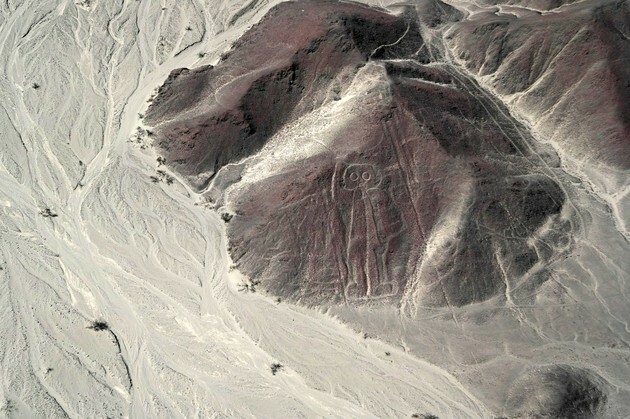
Due to the fact that these monumental lines can be seen from the air, many speculations have arisen to explain their purpose.
In an article called "Nazca Lines: A New Data Synthesis from the Pampas and the Valleys", Anthony Aveny and Helaine Silverman report that at least four different hypotheses about their function, use and meaning can be recognized that surround these geoglyphs in a sea of Confusions: as an alien airstrip, as pre-Hispanic sports tracks, as a religious center or as an orientation system astronomical.
Landing strip for aliens
In 1971 a writer named Erich von Däniken, surprised by the characteristics of this place and supposing that its elaboration had been very complex, he maintained that the Nazca geoglyphs were a landing strip for ships aliens.
Tracks for preshispanic olympics
In 1980, Georg A. Von Breunig argued that they could be race tracks to hold a kind of days of sports competition, that is, a kind of Olympics, although they would be ritualistic.
Religious purpose
In 1977, Jim Woodman's theory posited that the Nazca lines had religious purposes. Therefore, they would have been made to be observed by the gods and, even, by people who could have risen in the desert in aerostats. This implies that Woodman postulated the hypothesis that the Nazca culture handled elements of air navigation.
Astronomical function
This theory, until now the most serious of all, was proposed precisely by Kosok, who from the observation of a sunset in Nazca, detected that some of the lines were oriented towards the sunrise and sunset, while others were oriented towards the Pleiades.

According to Aveni and Silverman's research, Kosok's disciple Marie Reiche delved into this hypothesis and argued that, in addition, these lines functioned as a calendar that takes into account the sun, moon and stars.
However, for Aveni and Silverman, this hypothesis, although serious, does not fully explain the Nazca phenomenon. The authors note that both Kosok and Silverman overlook some elements that change the course of investigations.
In the first place, they do not take into account the fact that these geoglyphs were not made simultaneously, but that their elaboration was progressive. Second, the interpretive perspective on celestial phenomena is Eurocentric. Third, they openly ignore the problem of the sociocultural context in which the work is inserted. The fourth and last place, it is not a unique phenomenon. That is, according to Aveni and Silverman, other geoglyphs have also been located in the Lima Valley, in Supe, in the La Chincha valley, in Ica, in Pacatnamú, Bolivia and Chile, as we have already mentioned.
Aveni and Silverman's theory of geoglyphs

For Aveni and Silverman, who do not deny that the Nazca geoglyphs can function as an astronomical system and a calendar, it is necessary to understand that they account for other social, religious and political functions time.
Thus, the solar orientations that, in effect, are recognizable in some of its lines, may have to do, more Well, with an omen system related to the arrival of water to this area that is, fundamentally, a desert. This theory is based on the fact that there is evidence that the choice of the location of the lines is linked to the direction of the hills and the water sources.
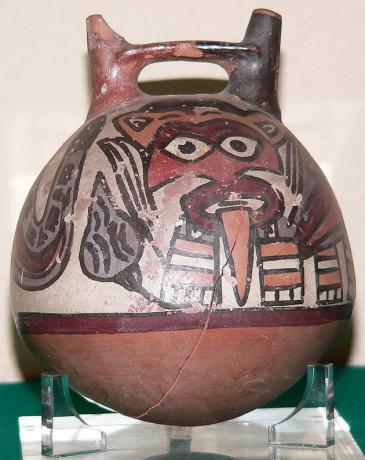
It is also possible, according to the authors' research, that the Nazca lines were related to the ceque system of the Inca culture. Ceques were imaginary radial lines used in Cuzco to plan the distribution of water according to social importance and, in addition, to fulfill religious functions. For Aveni, this may have applied in Nazca. It is also possible that some of the lines could have functioned as ceremonial pilgrimage paths, for example, and not just as simple means of communication.
See also Machu Picchu: its architecture and its sacred meanings.
Along with this, the researchers point out that there is an identity between the figures of the geoglyphs with the motifs that decorate the Nazca ceramics. Silverman carried out a series of excavations in Cahuachi (Nazca valley south of the Pampa), in which they discovered elements of a ceremonial center, equipped with a complex of geoglyphs that accompany pyramids, temples, squares and offerings rituals.
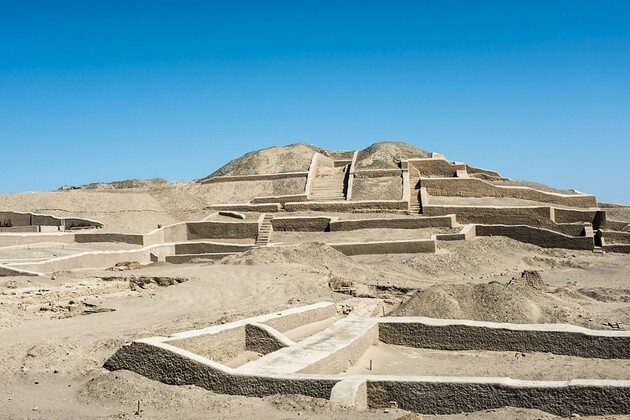
This information shows that, in effect, there are elements to believe that the monumental geoglyphs of Nazca correspond to a system complex sociocultural, which in turn is confirmed by the discovery of at least 500 archaeological sites dating from the period between the year 500 a. C. until the colonization of America. Part of these sites, according to the aforementioned article, are civic-ceremonial centers, cemeteries, villages, other geoglyph systems (these are geometric and not biomorphic), etc.
Nazca lines video
In the following video, you can appreciate the beauty of the Nazca lines in an overhead shot, through a film made with a drone.



